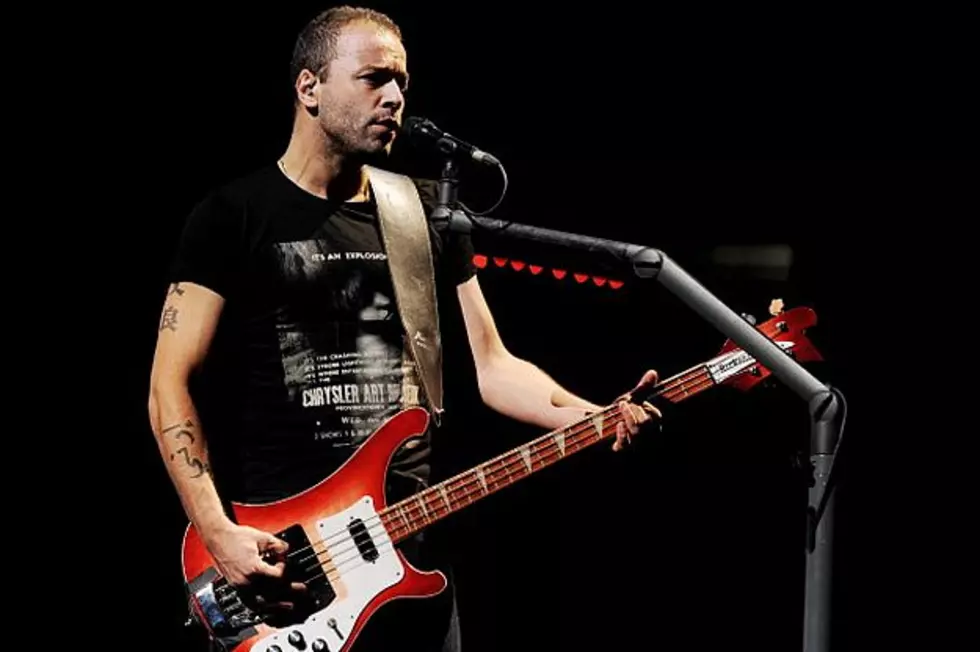Again highlighting the anchor of a power threesome, this Bass Players To Know highlights Chris Wolstenholme, bassist for Dream. Since the mid-90's, Dream has delivered inventive and clever music that keeps on pushing the limits of rock. Their awesome stage presence, tirelessness in the business, and splendid multi-instrumentalism keeps on bringing about hit records and sold out exhibitions. Wolstenholme brings complex bass riffs, strong sponsorship vocals, and a broad information on tone control to the table, guaranteeing him as a stalwart bass player to be aware.
So Who Is Chris Wolstenholme?
Brought into the world in 1978, Wolstenholme experienced childhood in Rotherham, Britain and started his melodic life as a drummer. He later moved to Devon and keeping in mind that working with one more band in a similar practice building, ran into Matt Bellamy and Dominic Howard.
They persuaded Wolstenholme to change to bass and shaped another band, Rocket Child Dolls. The threesome changed their name to Dream in 1994 and after a progression of exhibitions, more modest mark signings, and EPs, delivered their presentation record Showbiz in 1999. Throughout the following five years, Dream delivered two new collections, had their most memorable top ten hit with "There's no time to spare," and featured the Glastonbury Celebration. All the more critically, they guaranteed themselves as another power in the realm of awesome music, melding glitz and prog rock with traditional procedures, current electronic instrumentation, and operatic vocals.
All through the mid 2000's, they kept on delivering collections, climb the outlines, and visit the world. While keep their fifth collection in 2009, Wolstenholme grappled with his continuous liquor abuse and registered himself with recovery. He got back to the band and they delivered their most memorable self-created record.

The Obstruction, which procured them a Grammy grant for Best Stone Collection. Notwithstanding the progress of their studio records, they've delivered music for film (quite the Nightfall adventure), delivered live records including Inhabit Rome Olympic Arena, and have gotten various MTV Video Grants, Brit Grants, and awards for record and show deals.
Let’s Talk Style
Playing in an outfit like Dream, a threesome that keeps on obscuring the lines of melodic kind for imaginative investigation, Wolstenholme has permit to play with space and innovativeness. His bass lines are permitted to possess a significant part of the aural space, giving the consonant spine to the band, yet additionally a thick sonic pad for fantastic pianos and falsetto vocals. He displays each sort of overdrive an audience could need, going from crunchy and obvious metal-esk tones to fluffy, lower octave synth beds.
With regards to creation, the band wires traditional methods, for example, ostinato and arpeggiation with weighty, lick-based rock. Wolstenholme's riff-based grooves are savvy and complex, featuring driving tones like the thirds or sevenths of predominant harmonies.

He exploits open strings, playing bass lines that normally range the octave and hop up to the twelfth fret for a meatier sound. Besides, a large number of his bass lines reflect arpeggiation like that of the Bach cello suites, where the harmony is framed in a rising way with the third or fifth as the most elevated note. On the more climatic or anthem type melodies, his part is much of the time straightforward yet certifiable, utilizing solid root notes, saved chromaticism, and stressed driving tones.
Where Can I Hear Him?
1: Hysteria” (Muse: Absolution)
Conceivably perhaps of the coolest bass line in present day awesome music, Wolstenholme joins open string tumbling with smart chromatic diving lines. The primary riff drives the stanzas of the melody while an open, octave driven groove adds space to breathe to the ensembles. Blend in some weighty overdrive and a power position for most extreme stone. I'd lie in the event that I didn't confess to realizing this note for note and head banging before my room reflect.
2: New Born” (Muse: Origin Of Symmetry)
An extraordinary illustration of how Dream coordinates traditional sythesis in exciting music, this melody includes a driving eighth note subject to frame the harmony movement; a typical strategy suggesting Bach cello suites and the octave bounces in the lower register of Beethoven piano sonatas. The presentation separates into a heavier "B" part of the melody, upheld by Wolstenholme's vigorously overdriven tone and the utilization of chromatic, pressure prompting driving tones.
3: Madness” (Muse: Live at Rome Olympic Stadium)
While the bass line might appear to be straightforward, it's an extraordinary illustration of how Wolstenholme embraces present day innovation in the studio and live setting. Playing a twofold neck bass and synth instrument, he performs the majority of the tune by swiping his right thumb across an electronic cushion and worrying the neck of the synth. This empowers him to make a general sound that imitates the cadence of the vocal snare and to have command over the envelope of the note without playing on a conventional console. Following the performance, the entire band kicks in and Wolstenholme changes to the "conventional" neck of the bass to pedal and drive the last tune.
